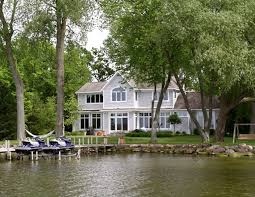Owning a waterfront home is a dream for many, offering stunning views and a lifestyle of tranquility, adventure, and a deep connection to nature. Whether you envision weekends kayaking, evenings on the shore, or waking to sunrises, finding the right property requires more than luck. The process can be daunting, but with expert guidance and strategies, it’s achievable. Successful search involves clarifying priorities, researching preferred regions, and understanding considerations like property conditions, legal, and financial details. These steps help ensure you make a well-informed purchase you’ll enjoy for years. Here are practical tips for navigating the competitive waterfront real estate market.
Understand Your Needs
Begin your journey toward waterfront homeownership by defining your must-haves and non-negotiables. Consider the body of water you’re drawn to—do you prefer the calm of a lake, the dynamic energy of the ocean, or the gentle flow of a river? Think about your intended activities: swimming, boating, fishing, or simply enjoying peaceful solitude. Also, reflect on privacy needs and whether you’re seeking a remote retreat or a lively community. Setting clear priorities will help you filter choices efficiently, keeping you focused on options like homes for sale in Camano Island that truly complement your lifestyle. With clarity in your vision, you can confidently move forward toward finding the perfect waterfront property.
Research the Location
Location is paramount with waterfront properties—your enjoyment and investment value depend on it. Study the area’s climate, the vibe of the local community, and historical environmental risks such as flooding, erosion, or hurricanes. Examine the long-term weather trends and the likelihood of natural disasters, which can affect both daily enjoyment and the longevity of your property. Delve into the seasonal character of the area as well: an idyllic summer spot may present challenges during winter months.
Evaluate the Property’s Condition
Waterfront properties can suffer more wear and tear due to constant exposure to moisture, salty air, or extreme weather. Review the home’s exterior, roof, and structures like docks or seawalls. Foundation issues and water damage can be expensive to fix and may not be immediately visible. Specialized inspections are essential—look for signs of rot, mold, corrosion, or insect invasions. Serious buyers should request reports from certified home inspectors who are familiar with the unique challenges of waterfront homes.
Consider Insurance and Regulations
Waterfront homes typically face higher insurance premiums, especially in areas at risk from storms, flooding, or erosion. Investigate what policies are available, what they cover, and what additional protection you might need. Also, familiarize yourself with local and federal regulations. Many waterfront properties face restrictions on renovation, shoreline use, and environmental protections, all of which can impact your plans.
Assess Accessibility and Amenities
Practicality cannot be overlooked—determine how easily you can reach your property year-round and what amenities you’ll find nearby. Is access to roads, bridges, or ferries reliable? Consider the proximity to hospitals, grocery stores, and schools. Evaluate emergency response times, which can be longer in remote areas. Also, confirm that the water quality and shoreline condition support your favorite activities, as well as any potential limitations due to conservation or safety concerns.
Work with a Waterfront Specialist
Partner with a real estate agent who specializes in waterfront properties; their expertise is invaluable. Specialists understand the nuances of these homes and can guide you through due diligence, help negotiate fair deals, and point out value-adding features or potential red flags you might miss. Insider knowledge of zoning laws, insurance requirements, and market trends helps streamline your search and reduces the risk of surprises after closing.
Conduct Thorough Inspections
Don’t skip the inspection—waterfront homes need extensive checks for hidden damage from water, pests, or harsh environmental factors. Qualified inspectors should examine foundations, drainage, land integrity, and waterfront-specific structures. Their reports will help you identify essential repairs and minimize long-term risks, ensuring you invest in a safe and durable property.
Plan for Maintenance
Proactive maintenance will protect your investment for years to come. Develop a plan covering annual roof and foundation inspections, shore stabilization, dock upkeep, and pest control. Budget accordingly—waterfront homes generally cost more in ongoing repairs due to salt, sun, and constant moisture exposure. Prioritize preventative measures to extend the life of your property and retain its value.
Conclusion
The search for your perfect waterfront home is both exciting and complex. With research, attention to detail, and the right support, you can avoid common pitfalls and enjoy the unique rewards of waterfront living. By focusing on the key factors outlined above, you’ll be better equipped to secure a property that meets your dreams and endures for generations.


